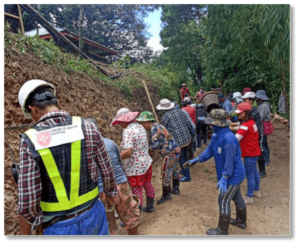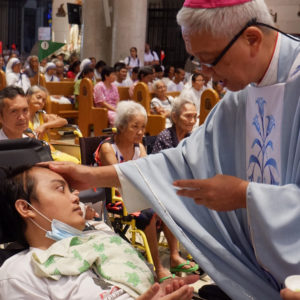Resilience Amidst Ruin: The Journey of the Sovereign Order of Malta in Post-War Philippines
Many were caught celebrating the Feast of the Immaculate Conception at Sunday mass when war came to the islands on December 8, 1941, forged by the Japanese Imperial Army. Don Paulino had no recourse but to close his shop and the free clinic for indigent patients.
Not four months later, the Japanese had won in battle over around 70,000 Filipino and 15,000 American soldiers in Bataan on April 9, 1942. The prisoners of war trudged waterless, wounded and hungry over a hundred kilometers to the prison camp. For propaganda purposes, because as many as 400 were dying daily from dysentery and malaria, they were freed in July.
Among them was Ernesto Rufino, a future president of the Knights of Malta.
In 1948, around the time he was named the honorary vice-consul of the Republic of Costa Rica, Señor Sampedro fulfilled his desire to reconnect with the Order when he formed the Spanish Order of Malta Delegation in the Philippines. Founded primarily for his fellow Spanish Knights, he also welcomed into the group a number of prominent Filipinos who took an interest in joining the Order.
There was no better time for a Christian Hospitaller Order to be established in the Philippines. The war and the period after it were especially difficult for Filipinos. The once beautiful Manila had been so devastated that the city and the rest of the country had had to rebuild virtually from rubble. (The islands had paid the terrible price exacted by the Japanese Imperial Army for being a colony of the United States.) Of the almost two million killed, fully a hundred thousand died or were massacred in 29 days between February and March 1945.
William Manchester described the Philippine capital’s fate in American Caesar: Douglas MacArthur, 1880-1964:
The devastation of Manila was one of the great tragedies of World War II. Of Allied cities in those war years, only Warsaw suffered more. Seventy percent of the utilities, 75 percent of the factories, 80 percent of the southern residential district, and 100 percent of the business district were razed. Nearly 100,000 Filipinos were murdered by the Japanese [in the days between February 3 and March 3, 1945]. Hospitals were set afire after their patients had been strapped to their beds. The corpses of males were mutilated, females of all ages were raped before they were slain, and babies’ eyeballs were gouged out and smeared on walls like jelly. The middle class, the professionals and white-collar workers, suffered most.
Two million people died in the vicious war, while virtually all the major Philippine cities lay in incredible ruin. In spite of the country’s pitiful state, the United States gave the country its independence in 1946, even while there were no funds to rebuild the war-torn islands.

Sovereign Military Hospitaller Order of St John of Jerusalem of Rhodes and of Malta
1120 R. Hidalgo Street, Manila, Philippines Tel. +287080860 | orderofmaltaphilippines@gmail.com


